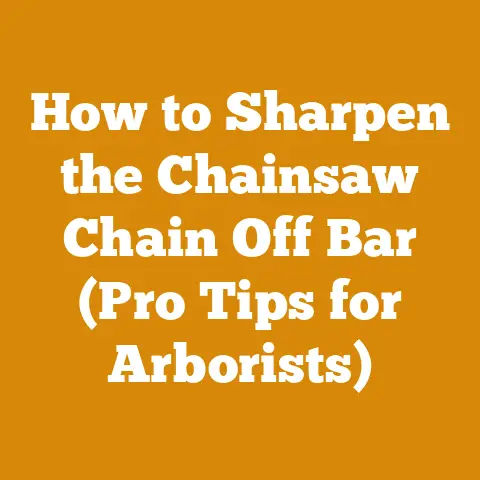How to Kill a Cottonwood Tree (Expert Tips for Efficient Removal)
Let’s get right to it! I’ll show you how to take down that cottonwood efficiently. Within a few days, with the right approach, you’ll be looking at a cleared space and a pile of manageable wood.
How to Kill a Cottonwood Tree (Expert Tips for Efficient Removal)
The satisfying crackle of a well-prepared fire on a cold winter’s night. That’s what fuels my passion for wood processing and firewood preparation. But sometimes, the journey to that cozy warmth starts with a less desirable task: removing a tree. Maybe it’s a hazard, an obstruction, or simply the wrong tree in the wrong place. Today, we’re tackling the often-necessary, and occasionally tricky, task of killing a cottonwood tree.
Cottonwoods, those fast-growing giants, can be a blessing and a curse. They provide shade quickly, but their weak wood, invasive roots, and propensity for dropping branches make them less than ideal in many landscapes. Before we dive in, remember: safety first! Always assess the situation, wear appropriate personal protective equipment (PPE), and consult local regulations regarding tree removal.
A Glimpse into the World of Wood: Did you know that the global firewood market is projected to reach over $30 billion by 2027? While modern heating systems dominate in many regions, the allure of a wood-burning fire remains strong, and sustainable wood management is increasingly important.
Understanding the Challenge: Why Cottonwoods Can Be Troublesome
Cottonwoods are notorious for their resilience. Killing them isn’t always a straightforward process. They sprout readily from roots and stumps, making complete eradication a multi-stage operation.
- Rapid Growth: They grow incredibly fast, often adding several feet of height per year.
- Weak Wood: Their wood is soft and prone to breakage, especially in storms.
- Invasive Roots: Roots can damage foundations, sidewalks, and septic systems.
- Cotton Production: The “cotton” they release in spring can be a nuisance, clogging gutters and irritating allergies.
Ethical Considerations: Is Removal the Only Option?
Before we proceed, it’s crucial to consider whether removal is truly necessary. Could the tree be pruned to address safety concerns? Is there room for it to coexist with your landscape? Sometimes, a skilled arborist can offer alternative solutions.
Step-by-Step Guide to Killing a Cottonwood Tree
This guide outlines several methods, each with its pros and cons. Choose the one that best suits your situation, your experience level, and the size of the tree. Always remember to prioritize safety and follow local regulations.
Method 1: The Herbicide Approach (For Smaller Trees and Stumps)
This method involves using herbicides to kill the tree. It’s most effective on smaller trees and stumps.
Key Concepts:
- Systemic Herbicides: These are absorbed by the tree and transported throughout its system, killing it from the inside out.
- Contact Herbicides: These only kill the parts of the tree they come into direct contact with. They are less effective for killing the entire tree.
- Glyphosate: A common systemic herbicide, but use with caution and follow all label instructions.
- Triclopyr: Another systemic herbicide, often more effective on woody plants than glyphosate.
Tools and Materials:
- Appropriate PPE (gloves, eye protection, long sleeves)
- Herbicide (glyphosate or triclopyr-based)
- Drill (with a large drill bit, ½ inch or larger)
- Paintbrush or sprayer
- Measuring cup
- Water (for dilution)
Detailed Steps:
- Assess the Tree: Determine the size and health of the tree. This will help you choose the appropriate herbicide concentration.
- Prepare the Herbicide: Carefully read and follow the manufacturer’s instructions for dilution. Remember, more isn’t always better. Overuse can harm the environment. I once made that mistake using a weed killer on my lawn which ended up damaging the grass.
- Cut the Tree (If Applicable): If you’re dealing with a larger tree, cut it down as close to the ground as possible. This will create a fresh surface for herbicide application.
- Drill Holes: Drill holes around the circumference of the stump, angled downward. The holes should be about 2-3 inches deep and spaced 2-3 inches apart. This creates reservoirs for the herbicide to soak into the stump.
- Apply Herbicide: Immediately after drilling, saturate the holes with the herbicide solution. Use a paintbrush or sprayer to apply herbicide to the freshly cut surface of the stump.
- Monitor and Repeat: Check the stump regularly for new growth. If sprouts appear, reapply the herbicide. It may take several applications to completely kill the tree.
- Dispose of Waste: Properly dispose of any leftover herbicide and contaminated materials according to local regulations.
Data Points and Statistics:
- Studies show that stump treatments with triclopyr are more effective at preventing resprouting than glyphosate on many hardwood species.
- The success rate of herbicide treatments depends on the timing of application. Fall applications are often more effective because the tree is actively transporting nutrients to its roots.
Actionable Tips:
- Apply herbicide on a calm day to prevent drift.
- Protect nearby plants from accidental exposure.
- Consider using a dye in the herbicide to mark treated stumps.
- Always wear appropriate PPE.
Cost and Budgeting:
- The cost of herbicide varies depending on the brand and concentration. Expect to spend $20-$50 for a suitable product.
- Factor in the cost of PPE and drilling equipment if you don’t already own them.
Troubleshooting:
- Sprouts Reappearing: This is common. Reapply herbicide as needed.
- Herbicide Not Working: Check the expiration date of the herbicide. Ensure you’re using the correct concentration. Consider switching to a different herbicide.
Method 2: Girdling (For Larger Trees – A Slower, More Natural Approach)
Girdling involves removing a ring of bark around the trunk of the tree, effectively cutting off the flow of nutrients and water. This method is slower than using herbicides, but it’s a more natural option.
Key Concepts:
- Phloem: The layer of bark that transports nutrients from the leaves to the roots.
- Xylem: The layer of wood that transports water from the roots to the leaves.
- Cambium: The layer of cells between the phloem and xylem that produces new bark and wood.
Tools and Materials:
- Axe or hatchet
- Saw (optional, for larger trees)
- Appropriate PPE (gloves, eye protection)
Detailed Steps:
- Assess the Tree: Determine the size of the tree and the thickness of the bark.
- Choose a Location: Select a location around the trunk where you will girdle the tree. It should be easily accessible and at least a few feet above the ground.
- Cut the Bark: Using an axe or hatchet, carefully cut through the bark in a continuous ring around the trunk. The cut should be at least 2-3 inches wide and deep enough to penetrate the cambium layer. You need to completely sever the phloem.
- Remove the Bark: Use the axe or hatchet to remove the strip of bark you’ve cut. You should see the bare wood of the xylem layer.
- Monitor the Tree: Over time, the tree will slowly die. It may take several months or even a year or two for the tree to completely die.
- Felling the Tree: Once the tree is dead, you can fell it safely. Be sure to follow proper felling techniques.
Data Points and Statistics:
- The effectiveness of girdling depends on the tree species and the time of year. Girdling is generally more effective during the growing season when the tree is actively transporting nutrients.
- Studies have shown that girdling can be an effective method for controlling invasive tree species in forests.
Actionable Tips:
- Make sure the girdle is wide enough to prevent the bark from growing back together.
- Consider girdling the tree in the spring or early summer for maximum effectiveness.
- Be careful not to damage the underlying wood.
- If the tree is very large, you may need to use a saw to cut through the bark.
Cost and Budgeting:
- The cost of girdling is minimal, as it only requires basic tools.
- Factor in the cost of felling the tree once it’s dead.
Troubleshooting:
- Bark Growing Back: This is possible. Inspect the girdle regularly and re-cut any areas where the bark is growing back.
- Tree Not Dying: Ensure the girdle is wide enough and deep enough. Consider using herbicide in conjunction with girdling.
Method 3: The “Hack and Squirt” Method (Herbicide Application with Precision)
This method combines the precision of direct herbicide application with the effectiveness of girdling. It’s a good option for larger trees where you want to minimize herbicide use.
Tools and Materials:
- Axe or hatchet
- Herbicide (glyphosate or triclopyr-based)
- Spray bottle or squirt bottle
- Appropriate PPE (gloves, eye protection)
Detailed Steps:
- Assess the Tree: Determine the size of the tree and the thickness of the bark.
- Make Cuts: Using an axe or hatchet, make cuts into the bark, spaced a few inches apart around the circumference of the tree. The cuts should penetrate the cambium layer.
- Apply Herbicide: Immediately after making the cuts, squirt or spray herbicide into each cut.
- Monitor the Tree: Over time, the tree will slowly die.
- Felling the Tree: Once the tree is dead, you can fell it safely.
Data Points and Statistics:
- The “hack and squirt” method is considered a cost-effective and environmentally friendly way to control unwanted trees in forests.
- Studies have shown that this method can be as effective as girdling or basal bark treatments.
Actionable Tips:
- Make the cuts at a downward angle to help the herbicide penetrate the tree.
- Use a concentrated herbicide solution for maximum effectiveness.
- Apply herbicide on a calm day to prevent drift.
Cost and Budgeting:
- The cost of this method is relatively low, as it only requires basic tools and a small amount of herbicide.
- Factor in the cost of felling the tree once it’s dead.
Troubleshooting:
- Tree Not Dying: Ensure the cuts are deep enough and that you’re applying enough herbicide. Consider using a different herbicide.
Method 4: Soil Sterilization (Use with Extreme Caution and Only in Specific Circumstances)
This method involves applying a soil sterilant around the base of the tree to kill its roots. I strongly advise against this method unless absolutely necessary. Soil sterilants can have long-lasting and detrimental effects on the environment, killing all vegetation in the treated area. Use this method only as a last resort and with extreme caution.
Key Concepts:
- Soil Sterilant: A chemical that kills all plant life in the soil.
- Environmental Impact: The negative effects of soil sterilants on the environment.
Tools and Materials:
- Soil sterilant (carefully chosen and used according to label instructions)
- Appropriate PPE (gloves, eye protection, respirator)
- Spreader or sprayer
Detailed Steps:
- Assess the Situation: Carefully consider the potential environmental impact of using a soil sterilant.
- Prepare the Soil: Clear away any vegetation from around the base of the tree.
- Apply the Sterilant: Carefully follow the manufacturer’s instructions for applying the soil sterilant.
- Monitor the Area: Keep people and animals away from the treated area.
Data Points and Statistics:
- Soil sterilants can remain active in the soil for many years, preventing any plant life from growing.
- The use of soil sterilants is restricted in many areas due to their environmental impact.
Actionable Tips:
- Do not use this method unless absolutely necessary.
- Choose a soil sterilant that is specifically designed for tree control.
- Apply the sterilant carefully to avoid contaminating surrounding areas.
- Follow all label instructions.
Cost and Budgeting:
- Soil sterilants can be expensive.
- Factor in the cost of PPE and application equipment.
Troubleshooting:
- Soil Sterilant Not Working: Ensure you’re using the correct product and applying it according to the label instructions.
- Environmental Damage: Be prepared to remediate any environmental damage caused by the soil sterilant.
Method 5: Direct Root Cutting (A Labor-Intensive, but Effective Approach)
This method involves physically cutting the tree’s roots to prevent it from resprouting. It’s a labor-intensive method, but it can be effective, especially when combined with other methods.
Tools and Materials:
- Shovel
- Pickaxe
- Saw
- Appropriate PPE (gloves, eye protection)
Detailed Steps:
- Assess the Root System: Carefully examine the area around the base of the tree to identify the main roots.
- Excavate the Roots: Use a shovel and pickaxe to excavate the soil around the roots.
- Cut the Roots: Use a saw to cut the roots. Cut as many roots as possible, especially the larger ones.
- Monitor for Resprouts: Check the area regularly for new sprouts. If sprouts appear, cut them off or apply herbicide.
Data Points and Statistics:
- The effectiveness of root cutting depends on the tree species and the extent of the root system.
- Root cutting is often more effective when combined with other methods, such as herbicide application.
Actionable Tips:
- Cut the roots as close to the trunk as possible.
- Remove as much of the root system as possible.
- Be prepared to repeat the process if sprouts appear.
Cost and Budgeting:
- The cost of this method is primarily labor.
- Factor in the cost of tools and PPE.
Troubleshooting:
- Sprouts Reappearing: This is common. Continue to cut off or treat any sprouts that appear.
- Difficult Root System: Use a power tool, such as a reciprocating saw, to cut through larger roots.
Felling the Tree Safely (Once it’s Dead or Weakened)
Once you’ve successfully killed the cottonwood, you’ll need to fell it safely. This is a critical step that requires careful planning and execution.
Key Concepts:
- Hinge Wood: The portion of the tree trunk that remains uncut during felling, controlling the direction of the fall.
- Back Cut: The final cut that releases the tree.
- Felling Wedges: Used to help direct the fall of the tree.
- Escape Route: A pre-planned path to retreat to safety after making the back cut.
Tools and Materials:
- Chainsaw (appropriate size for the tree)
- Axe or hatchet
- Felling wedges
- Measuring tape
- Appropriate PPE (helmet, eye protection, hearing protection, chainsaw chaps, steel-toed boots)
Detailed Steps:
- Assess the Situation: Evaluate the tree’s lean, the surrounding terrain, and any potential hazards (power lines, buildings, etc.).
- Plan the Fall: Decide which direction you want the tree to fall. Ideally, choose a direction that is clear of obstacles and allows for a safe escape route.
- Clear the Area: Remove any debris or obstacles from the felling zone and your escape route.
- Make the Notch Cut: Cut a notch on the side of the tree facing the direction you want it to fall. The notch should be about one-third of the tree’s diameter.
- Make the Back Cut: On the opposite side of the tree from the notch, make a back cut, leaving a hinge of wood. The hinge should be about one-tenth of the tree’s diameter.
- Insert Felling Wedges: If the tree doesn’t start to fall on its own, insert felling wedges into the back cut and hammer them in to help push the tree over.
- Retreat to Safety: As the tree begins to fall, retreat quickly along your pre-planned escape route.
- Monitor the Fall: Watch the tree as it falls to ensure it doesn’t hit any obstacles or fall in an unexpected direction.
Data Points and Statistics:
- According to the Occupational Safety and Health Administration (OSHA), tree felling is one of the most dangerous jobs in the logging industry.
- Proper training and the use of appropriate PPE can significantly reduce the risk of accidents.
Actionable Tips:
- Never fell a tree alone.
- Always have a clear escape route.
- Be aware of your surroundings.
- Use felling wedges to help direct the fall of the tree.
- If you’re not comfortable felling a tree, hire a professional arborist.
Cost and Budgeting:
- The cost of felling a tree depends on the size of the tree and the complexity of the job.
- If you’re hiring a professional arborist, expect to pay several hundred dollars or more.
Troubleshooting:
- Tree Not Falling: Check the hinge wood. Ensure the back cut is deep enough. Use felling wedges.
- Tree Falling in the Wrong Direction: This can be extremely dangerous. Try to redirect the fall with felling wedges, but if that’s not possible, retreat to safety and let the tree fall where it may.
Processing the Wood: From Tree to Firewood (Optional)
If you’re planning to use the cottonwood for firewood, here are some tips for processing it.
Key Concepts:
- Green Wood: Freshly cut wood with a high moisture content.
- Seasoned Wood: Wood that has been dried to a lower moisture content.
- Moisture Content: The amount of water in the wood, expressed as a percentage of the wood’s dry weight.
- British Thermal Unit (BTU): A measure of the heat content of fuel.
Tools and Materials:
- Chainsaw
- Splitting axe or maul
- Wedges
- Measuring tape
- Moisture meter (optional)
Detailed Steps:
- Bucking: Cut the tree trunk into manageable lengths for splitting.
- Splitting: Split the logs into smaller pieces.
- Stacking: Stack the firewood in a way that allows for good air circulation.
- Seasoning: Allow the firewood to dry for at least six months, or preferably longer.
Data Points and Statistics:
- Cottonwood has a relatively low BTU rating compared to other hardwoods.
- Seasoning firewood reduces its moisture content and increases its BTU rating.
- Firewood should have a moisture content of 20% or less for optimal burning.
Actionable Tips:
- Split firewood as soon as possible after felling the tree.
- Stack firewood in a sunny, windy location.
- Cover the top of the firewood stack to protect it from rain and snow.
- Use a moisture meter to check the moisture content of the firewood.
Cost and Budgeting:
- The cost of processing firewood depends on the amount of wood and the equipment you use.
- Factor in the cost of chainsaw fuel, splitting tools, and storage.
Troubleshooting:
- Firewood Not Drying: Improve air circulation around the stack. Consider moving the stack to a sunnier location.
- Firewood Rotting: Ensure the stack is not in contact with the ground. Cover the top of the stack to protect it from rain and snow.
Alternatives to Firewood: Repurposing Cottonwood
Cottonwood, while not ideal for firewood, can be repurposed in other ways.
- Composting: The wood chips and smaller branches can be added to your compost pile.
- Mulch: The wood chips can also be used as mulch around trees and shrubs.
- Craft Projects: Smaller pieces of cottonwood can be used for various craft projects.
- Animal Bedding: Cottonwood shavings can be used as bedding for livestock or pets.
Case Study: My Cottonwood Saga
I once had a massive cottonwood threatening my workshop. It was leaning precariously after a storm, and I knew it had to come down. I opted for a combination of girdling and herbicide application. I girdled the tree in the spring, carefully removing a wide ring of bark. Then, I drilled holes into the exposed wood and saturated them with herbicide. It took several months, but the tree eventually died. Felling it was a challenge, but with careful planning and the help of a friend, we brought it down safely. I ended up using the wood for a large bonfire, and the ashes enriched my garden soil.
Troubleshooting Common Problems
- Tree Sprouts After Treatment: This is a common issue, especially with cottonwoods. Be persistent! Reapply herbicide or cut off the sprouts as soon as they appear.
- Difficulty Felling the Tree: If you’re not comfortable felling the tree yourself, hire a professional arborist. It’s better to be safe than sorry.
- Environmental Concerns: Be mindful of the environmental impact of your actions. Use herbicides responsibly and avoid soil sterilants if possible.
Final Thoughts: Patience and Persistence
Killing a cottonwood tree can be a challenging task, but with the right approach and a bit of patience, you can achieve your goal. Remember to prioritize safety, follow local regulations, and be mindful of the environment. And don’t be afraid to seek professional help if you need it.






